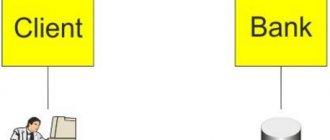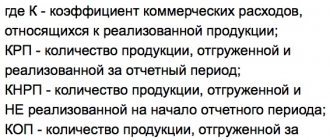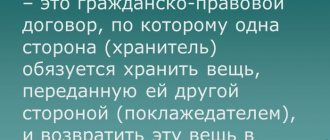Business lawyer > Accounting > Accounting and reporting > What administrative expenses include: accounting features, write-off methods
Paragraph 20 of PBU 10/99 determines that any enterprise has the right to independently determine in its accounting policies how to recognize expenses, including management expenses. They can become part of the cost by type of business activity: production or sale of goods, provision of services, performance of work (letter of the Ministry of Finance No. 07-05-06/191 dated 02.09.208). When developing accounting policies, you should be guided by the Instructions for the chart of accounts.
What are administrative expenses and how do they differ from commercial expenses?
Management costs include costs that do not have a direct connection with the production or sale of goods, services, or work. If costs can be associated with one of the areas of business activity, they are considered commercial (for example, wages and deductions for the head of a production department).
Cost calculation
Management costs can be included in the cost price if they are distributed in proportion to revenue across all types of manufactured products (sold goods, works, services). When developing an accounting policy, an enterprise (organization) must be guided by Law No. 129-FZ and paragraph 4 of PBU 1/2008.
The chart of accounts is developed on the basis of the Plan approved by the Ministry of Finance on October 31. 2000, and based on the scope of activity, legal form, scale and structure of the enterprise. The accounts that will be necessary to account for business activities are selected and supplemented with subaccounts and analytical accounts. If some accounts are not needed, they are not included in the work plan. Administration costs are always included in general business expenses (accounts 26 and 27).
What is included in management expenses
The composition of this type of costs largely depends on the field of activity, but in general, management costs include funds spent on:
- maintenance of buildings housing administrative personnel: human resources department, legal department, etc.
- salaries and deductions of administrative personnel
- purchasing equipment and office supplies for the office
- office staff business trips
- payment for communication services
Administrative department - entertainment events
- repair of that part of fixed assets that are not related to the main production activity
- depreciation of fixed assets not related to the main production activities
- rental of premises for general purposes
- property and personnel insurance
- auditors, consultants, information providers
- lighting, water supply, heating, sewerage in administrative staff premises
- taxes paid on fixed assets, transport
- enterprise security, measures to ensure fire safety
- labor protection and product certification
- transportation of workers to and from work place
- taxes not related to the production process: water and transport tax, tax on harmful emissions
- management company services
Each enterprise can add or shorten this list if the specifics of business activity require it.
This could include spending on protective clothing and personal protective equipment, printing services, postal services, cleaning, disinfection of premises, maintenance of the yard and road, bathhouses or showers, canteen, and first aid station. This category also includes the costs of training and advanced training, and the search for new employees.
MANAGEMENT EFFICIENCY. MANAGEMENT COSTS
Management effectiveness is effective leadership, understood as the ability of a manager to force or motivate, interest his subordinate employees to work energetically, productively, with high returns.
Management effectiveness is a targeted focus on creating necessary, useful things that can satisfy certain needs and ensure the achievement of final results that are adequate to the set management goals.
The quality of management, understood as its effectiveness, is characterized by the result, the effect achieved by the subject of management due to its impact on the object of management.
The effect is the result, the result of the activity.
Efficiency is characterized by the ratio of the effect to the expenditure of resources that ensured the receipt of the effect and the achievement of the desired result.
Efficiency is the effect per unit of resources spent to obtain the achieved result. Management efficiency formula Management efficiency = Management effectiveness / Management costs.
Management costs are part of transaction costs that are not directly related to the production and circulation of goods, but are caused by these processes that complement them, representing the design side of such processes.
The results of managed economic processes are the result of managerial, economic, and production activities.
Formula for the efficiency of the entire managed economic object or process:
Efficiency in economics is measured by the ratio of the effect obtained, the result, to the total costs that determined its receipt.
The effectiveness of economic management should be judged by indicators of the economic efficiency of managed objects and processes based on the formula:
Efficiency = Result / Cost of obtaining the result.
The highest level of management efficiency is the result at the lowest management costs.
If management costs are limited to a given value, then it is necessary to establish what maximum result can be achieved at a given level of costs. In this case, the highest possible indicator of management efficiency, considered as an independent process, is also achieved.
The main resource of management is the labor of workers in the sphere of economic management, called managerial labor. The information productivity of managerial labor is determined by the amount of management information of the required quality and purpose or the amount of management documentation produced by an employee in a certain time.
The indicator of labor productivity of managers is the economic effect achieved as a result of the activities of a certain management body.
Feature: the problem of defining and quantitatively measuring management effectiveness remains the subject of research in management science.
1 | 2 | 3 | 4 | 5 | 6 | 7 | 8 | 9 | 10 | 11 | 12 | 13 | 14 | 15 | 16 | 17 | 18 | 19 | 20 | 21 | 22 | 23 | 24 | 25 | 26 | 27 | 28 | 29 | 30 | 31 | 32 | 33 | 34 | 35 | 36 | 37 | 38 | 39 | 40 | 41 | 42 | 43 | 44 | 45 | 46 | 47 | 48 | 49 | 50 | 51 | 52 | 53 |
Management expenses are the costs of managing an organization. Administrative expenses make up part of the organization’s current expenses, which form the cost of products (works, services).
Administrative expenses are expenses not related to the production or commercial activities of the enterprise: costs of maintaining the personnel department, legal department, lighting and heating of non-production facilities, business trips, communication services, etc. Thus, if management costs can be associated directly with any production process, then these costs cannot be attributed to management costs, but are included in the cost of the corresponding products. For example, the salary of a workshop manager is included in the cost of products produced by that workshop. At the same time, the salaries of the general director, personnel department employees, etc. included in administrative expenses.
In accounting, management expenses are reflected in the debit of the general expenses account.
Reflection of management costs in accounting
Administrative expenses do not depend on the volume of business activity, so they cannot be written off to “Main production” at the end of the month (account 20). They are taken into account in “General expenses” (D 26).
Features of accounting are that there are two write-off methods:
Reflection in accounting
- traditional - are recognized as conditionally constant and are fully related to the full cost, carried out as K 26, D 90
- based on the division of administrative costs into semi-fixed and semi-variable
When using the second method, the reduced production cost is calculated, conditionally fixed expenses are written off to “Cost of sales” (D 90-2), that is, they are recognized as costs of the reporting period that reduce income.
There are 3 options for writing off the conditionally variable part:
- K 26, D 20 - if they relate to the main production
- K 26, D 23 - if they relate to auxiliary production
- K 26, D 29 - if they relate to service facilities or production
Administrative costs are included in the cost price after the sale of products (goods) and are written off to “Sales” (account 90). The income statement is reflected in line 040.
Some economists express the opinion that administrative costs can be written off on D 91 if there were no sales during the reporting period.
Disputes with the tax office most often arise over expenses for the services of management companies. If there is an agreement, a document confirming payment, and an acceptance certificate for work performed, there should be no claims. Tax authorities may consider this type of service to be economically unprofitable and aimed at tax evasion. Analyzing the decisions made by the courts in similar cases, we can conclude that most entrepreneurs manage to prove that such expenses are justified.
Administrative and commercial expenses
Administrative expenses include the cost of purchasing office supplies and other materials to provide office staff. These include costs aimed at purchasing fuel and lubricants for business vehicles and expanding the office vehicle fleet.
The concept of management expenses is not contained in regulations governing accounting. Accounting for these expenses is determined in a practical way. In particular, UR are recorded in the line “Management expenses”, on account 26 (debit):
- DT KT02, 05 – depreciation calculation for fixed assets.
- DT26 KT04 – write-off of expenses for scientific and other research, the results of which will be used in further general economic activities.
- DT26 KT16 – write-off of deviations in the cost of fixed assets that were applied for general business needs.
- DT26 KT18 – VAT write-off.
- DT26 KT21 - the use of semi-finished products that were manufactured in production for general economic needs.
- DT26 KT23 – write-off of expenses of auxiliary production.
- DT26 KT29 – write-off of expenses of service farms.
- DT26 KT43 – write-off of the cost of finished products that are used for general economic needs.
- DT26 KT60, 76 – accounting for expenses for the services of auditors, consultants and other representatives of third-party companies.
- DT26 KT68 – tax assessment.
- DT26 KT69 – calculation of contributions for pension or health insurance.
- DT26 KT70 – accrual of earnings for management staff.
- DT26 KT71 – write-off for general business expenses generated by reporting employees.
- DT26 KT76 – provision of services for general business needs.
- DT26 KT79 – general business expenses generated at the head office and received by branches, aimed at the autonomous balance.
- DT26 KT94 – write-off of shortages and expenses from damage to material objects.
- DT26 KT96 – formation of reserves for future expenses for general business expenses.
- DT26 KT97 – write-off of expenses for upcoming periods.
When making a management assessment of the financial results of individual areas of the enterprise, it makes sense to take into account other related income and expenses, such as exchange rate differences or the results of property sales.
The question of the legality of accounting for management expenses for the purposes of calculating ... part of the income tax was the management expenses of the organization. Between the company and ... JSC it was possible to prove the legality of accounting for management expenses for the purposes of calculating tax on ... competence. Services of an interdependent manager ≠ management expenses. Apparently, the “scheme”...
Administrative expenses may be recognized in the cost of sales ... PBU 10/99, the procedure for recognizing administrative expenses must be disclosed as part of ...
A striking example of such expenses is the cost of departments that are found in most companies - this is the accounting department or the legal department.
We believe that the cost of bonuses for the chairman of the HOA board can be included as a separate line in the “Administrative and management expenses” section of the estimate.
General and administrative are the general expenses associated with servicing the enterprise as a whole and managing all its production and economic activities, as well as other expenses that are not included in the cost of products, works and services.
Financial analysis of management costs
Management costs in financial analysis are classified as semi-fixed, since their value does not depend on production volume. If the volume of products produced (sold) increases, profit per unit increases due to scale.
Difficult economic conditions force entrepreneurs to take a different look at the administration staffing table. Enterprise managers are trying to combine the functions of departments in order to reduce the number of employees. This allows you to reduce costs for salaries, rent, transportation, office equipment, and business trips. The amount saved is the amount of increased profit.
Some choose a different path - reducing wages, allowances and bonuses while maintaining the size of the administrative apparatus. This option is preferable because it does not increase the unemployment rate or reduce employee loyalty.
A good option is to transfer part of the office staff to the “home” mode, which allows saving on rent of premises, utility bills, and official transport. Almost all staff can work via the Internet.
Competent financial analysis allows you to use the optimization of administrative costs as a means of increasing profits. The funds saved on optimizing the management staff can be invested in development, reorganization, renewal, and innovation.
Top
Write your question in the form below
Line 2220 “Administrative expenses”
Home/ Accounting statements/ Line 2220 Attention!
Important news from the site! Expanding the functions of the site. Remember the new address Line 2220 of the financial statements
refers to
the Statement of Financial Results
.
Line 2220
reflects information about the organization's gross profit excluding commercial and administrative expenses.
1) If the organization’s accounting policy (UPP) provides for the inclusion of management costs in the cost of products, works, services, then






